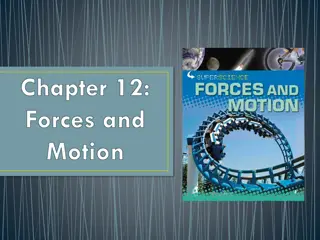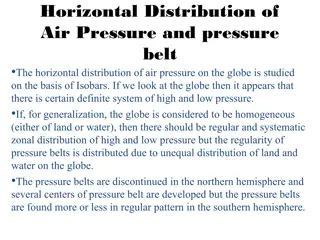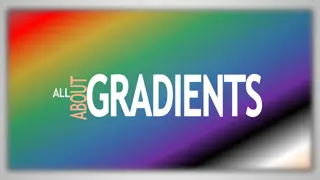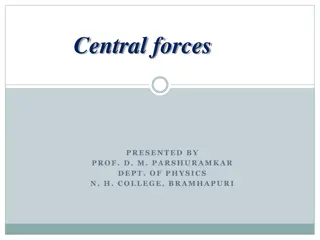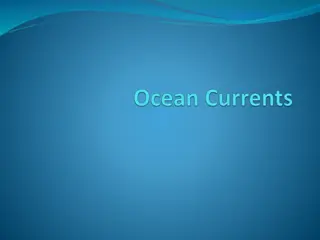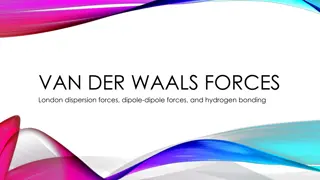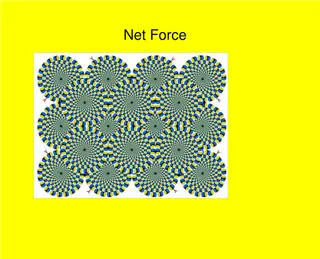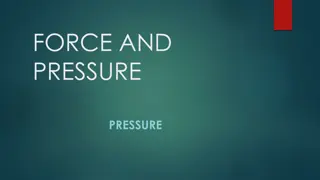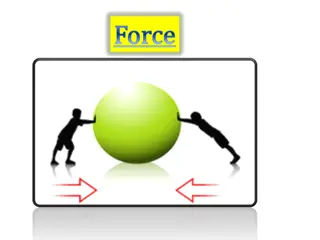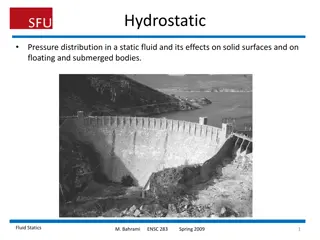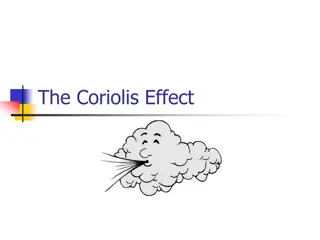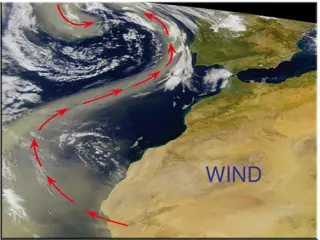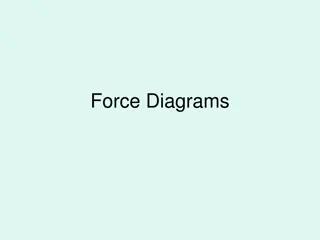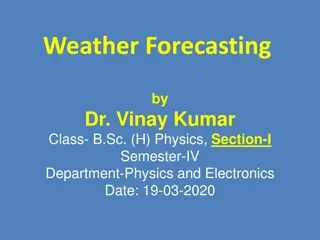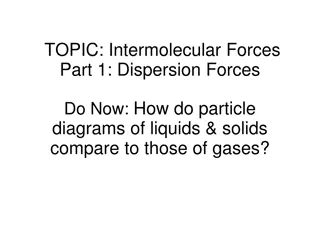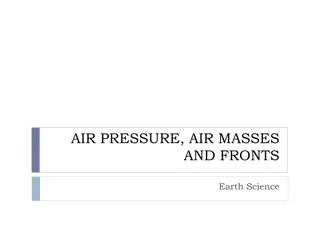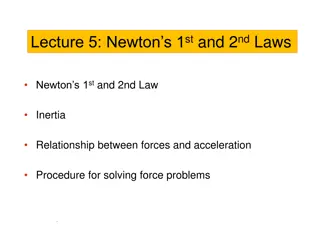Forces Affecting Air Movement: Pressure Gradient Force and Coriolis Force
The pressure gradient force (PGF) causes air to move from high pressure to low pressure, with characteristics including direction from high to low, perpendicular to isobars, and strength proportional to isobar spacing. The Coriolis force influences wind direction due to the Earth's rotation, making objects veer to the right in the Northern Hemisphere and to the left in the Southern Hemisphere. Understanding these forces is crucial in meteorology and atmospheric science.
Download Presentation

Please find below an Image/Link to download the presentation.
The content on the website is provided AS IS for your information and personal use only. It may not be sold, licensed, or shared on other websites without obtaining consent from the author.If you encounter any issues during the download, it is possible that the publisher has removed the file from their server.
You are allowed to download the files provided on this website for personal or commercial use, subject to the condition that they are used lawfully. All files are the property of their respective owners.
The content on the website is provided AS IS for your information and personal use only. It may not be sold, licensed, or shared on other websites without obtaining consent from the author.
E N D
Presentation Transcript
Pressure Gradient Force (PGF) Causes air to move from high pressure toward low pressure Three characteristics of the PGF: 1) directed from H to L 2) perpendicular to isobars 3) magnitude is proportional to isobar spacing (i.e., tight spacing = stronger PGF)
Pressure Gradient Force (PGF) Dp Dx PGF=-1 08 r 12 04 density 16 00 horizontal distance H L 12 04 08 1) directed from H to L 2) perpendicular to isobars 3) magnitude is proportional to isobar spacing (i.e., tight spacing = stronger pgf) In this example, isobars are evenly spaced so PGF has the same strength everywhere.
Pressure Gradient Force 4 mb/100 km
PGF = Pressure Gradient Force close isobar spacing, strong PGF farther spacing, weak PGF
HYDROSTATIC RELATIONSHIP 700 mb 800 mb 900 mb Upward pressure gradient force (PGF) is balanced by gravity (g).
HYDROSTATIC RELATIONSHIP Dp Dz=-rg gravity vertical distance Despite very strong vertical pressure gradients, vertical winds (rising and sinking air) are generally weak. The vertical PGF is NOT responsible for vertical winds.
Coriolis Force (COR) (viewed from above) turntable target Dart misses target as target has rotated out of position dart gun Time = 1 (now) Time = 2 (15 sec. later)
Coriolis Force (COR) (as viewed while riding on turntable) turntable A mysterious force caused the dart to veer to the right of the target Definition: force applied to a body in motion that appears to cause it to turn to its right in the Northern Hemisphere (or to its left in the Southern Hemisphere). target dart gun
Coriolis Force Simple Coriolis demonstration: https://www.youtube.com/watch?v=dt_XJp77-mk&app=desktop
Coriolis Force (COR) Not a real force arises from our frame of reference as we travel on a planet that is constantly rotating Deflection by COR (right or left) is greater for a) faster rotation, and b) greater distance travelled (higher speed) COR =2WVsinf constants wind speed latitude @ equator, sin 0 = 0, so COR = 0 @ poles, sin 90 = 1, so COR = maximum
Coriolis Force In the Northern Hemisphere, the Coriolis force causes an air parcel to deflect TO ITS RIGHT (to the right of its direction of motion), regardless of the direction of motion. This deflection increases toward the North Pole.
Variation of Coriolis Force with Speed and Latitude Stronger wind speed = stronger Coriolis force
REVIEW OF KEY FORCES Pressure gradient force (PGF) High to Low Perpendicular to the isobars Proportional to isobar spacing Coriolis force (COR) Acts to right of parcel direction in N. Hemisphere (and to left in S. Hemisphere) Maximum at poles, zero at equator Proportional to wind speed (Chap. 8, pp. 210 214)
EVSC 3300 Atmosphere and Weather (3 credits) MWF, 10 10:50 a.m. EVSC 3301 (1 credit lab. optional for non- majors) Prerequisite: one semester of calculus



